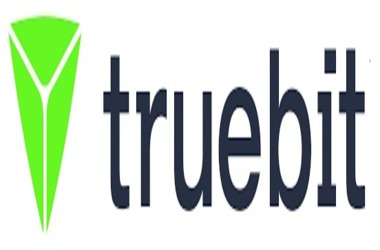
Web3 technology, often referred to as the decentralized web, facilitates peer-to-peer transactions using blockchain technology, eliminating the need for centralized servers. This technology enables self-executing code, known as smart contracts, to operate on blockchain infrastructure. Web3 harnesses consensus, verification, and transparency to ensure security, reliability, risk mitigation, portability, interoperability, and cost control. A recent estimate by International Data Corp. indicates that approximately 80% of enterprises are expected to engage in ecosystems reliant on decentralized Web3 code within the next five years.
Blockchain enhancement technology enhances security and transparency in decentralized Web3 ecosystems
Truebit’s focus lies in addressing the 99% of application logic that executes outside the blockchain. For example, a smart contract may trigger a process that carries out a financial transaction on a platform external to the blockchain, creating a vulnerability that fraudsters could exploit.
Blane Sims, Head of Product at Truebit, posed the question, “How do you fundamentally make computing transparent and secure?” In the context of a financial transaction, Truebit introduces a certified transcript of identity validation services provided by a third party. The transcript undergoes verification via machine learning algorithms designed to identify suspicious activities. Furthermore, Truebit independently certifies the accuracy of intended trades and the data reported to investors and regulators.
Sims emphasized that while the blockchain is an excellent foundation for ledger writing, transparency, and security in decentralized transactions, it falls short in providing the necessary architectural stack for typical applications. He explained, “[Application program interfaces] are not natively Web3 constructs. They’re part of the Web2 mainstream. Making an API call in a transparent way that shows proof of how the call was made, the interactions with the service, and proof of the data the service provided is where Truebit comes in.”
Truebit’s serverless Verify integration framework offers developers the flexibility to read and write code to any API, facilitating iterative application deployment and workflow optimization. The platform’s strengths include improved security, data integrity, and process transparency. Applications can interact with multiple data sources and execute complex code with verifiable results.
The architecture of Truebit’s product features a fully isolated sandbox for secure execution of off-ledger tasks. Code is disseminated across all Truebit Nodes, automatically verifying each task’s execution for consistency with the written code.
Truebit Tasks are designed to read and write data from both public and private APIs, offering verified operations for data transformations and calculations. These tasks remain accessible through a standard REST interface and can support an application’s event-driven architecture. The platform supports multiple programming languages, including JavaScript, Rust, and C++, and is extensible to any language supported by the WebAssembly portal binary code. Programs can copy data and transfer assets between ledgers, adhering to rules and validation specific to the application’s requirements.
The software runs on multiple decentralized nodes, which repeatedly execute the same functional call to ensure consistent results. In cases of discrepancies, a “verification game” is initiated, wherein the system delves into the machine code level in Web Assembly to identify the misbehaving node. Sims explained, “It may be trying to alter the result of the function or perhaps has simply been misconfigured. In either case, that node’s results are thrown out.”
The architecture of Truebit’s product continues to provide a fully isolated sandbox for secure off-ledger task execution, with code verification across all Truebit Nodes. Tasks are capable of reading and writing data from public and private APIs, ensuring verified operations for data transformations and calculations.
Sims likened the platform to a message broker that processes requests for function calls, gathers results, verifies them, and generates a transcript.
Truebit, a 20-person company, was founded by Jason Teutsch, the original designer of the Truebit verification protocol, which he detailed in a 2017 research paper. The project is currently in beta testing and is slated for a full launch by the end of the year.